“There is no stronger or more important ‘living bridge’ than what the United Kingdom shares with India, and especially Bengal. It has been fantastic to see how the Bengal Heritage Foundation (BHF) has been nourishing and developing this unique bond over the years,” said Nick Low, the British Deputy High Commissioner in Kolkata, at The Bengal Club on December 27.
Low was speaking at the Bengal Heritage Dinner organised by the BHF — set up by a group of Bengali families in London in 2009 — to shed light on the wide-ranging work that the Foundation does to bolster Indo-British ties, apart from promoting the distinctive qualities of Bengal and Bengalis in the UK.
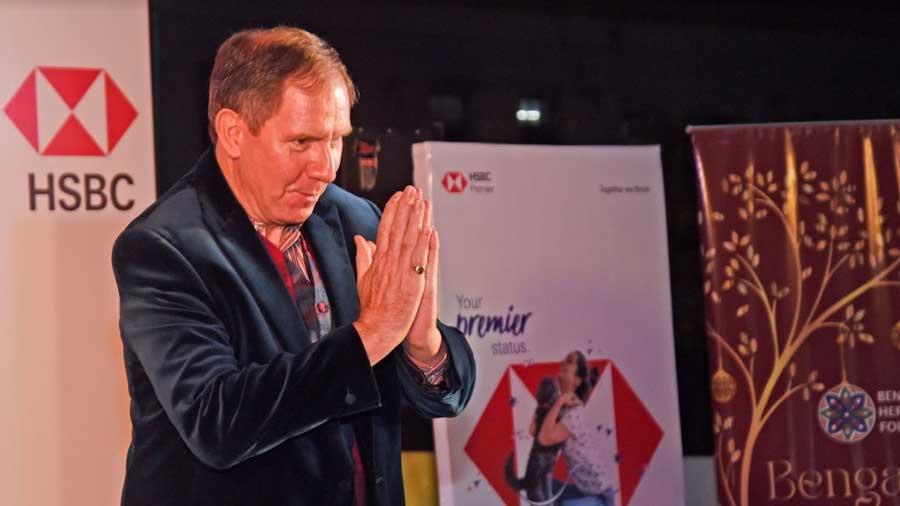
Nick Low, the British Deputy High Commissioner in Kolkata, stressed on the potential for more collaborations between India and the United Kingdom Amit Datta
The Covishield model
“The war of ideas didn’t die at the end of the Cold War. Liberal democracy is still not the norm everywhere around the world. What we need today is a network of liberty among nations through economic, political and cultural partnerships. We have already seen a great example of this in the form of the Covishield vaccine, which is a product of collaboration between India and the UK. The stars have never been better aligned for our countries to take our collective agenda forward,” added Low.
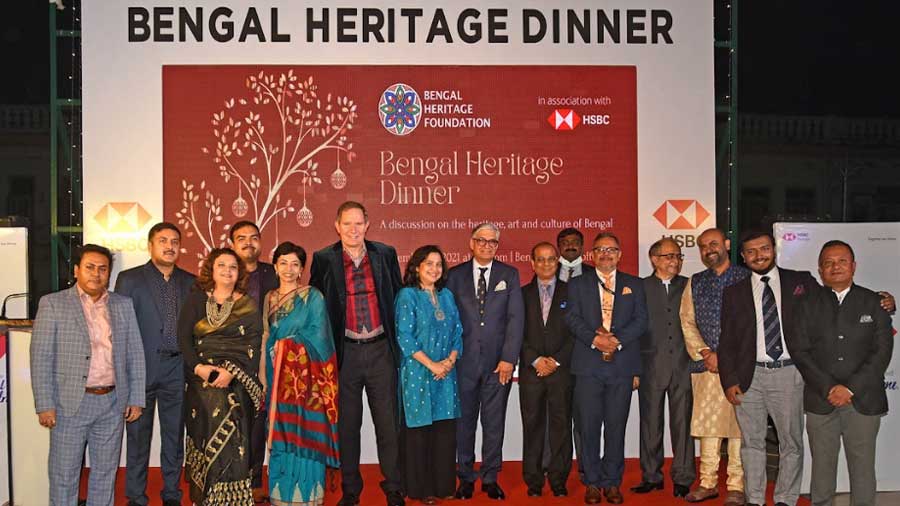
Members of Bengal Heritage Foundation and guests congregate for the Bengal Heritage Dinner at The Bengal Club Amit Datta
Following Low’s address, Sourav Niyogi, the outgoing president of the Foundation, highlighted the major events organised by the Foundation annually. This includes the London Sharad Utsav, one of the largest Durga Puja celebrations in Europe and the BHF’s signature event, at the Ealing Town Hall, a cultural programme on Rabindra Jayanti every May, as well as the Fagun Fest, which documents the best of folk culture and rural art from Bengal in London, Cardiff and Dublin.
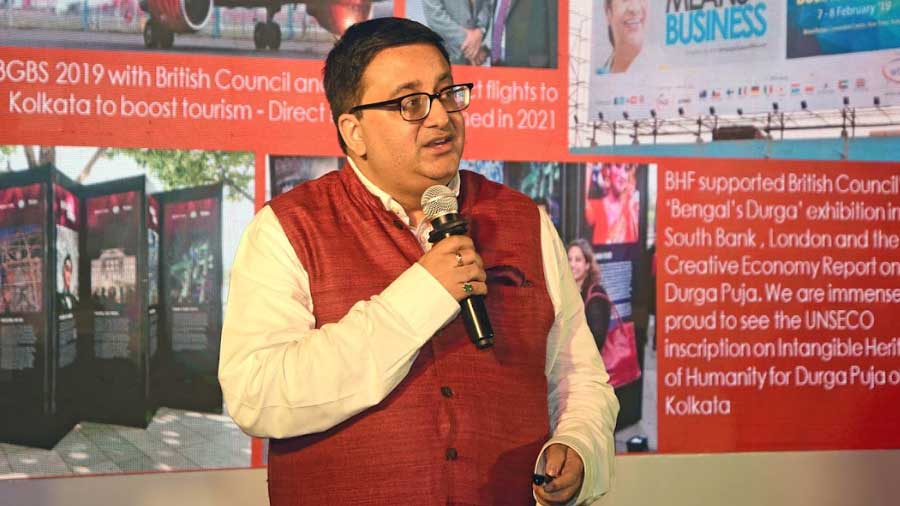
Sourav Niyogi, the outgoing president of the Foundation, outlined the excellent work that BHF does all year around Amit Datta
“One man from rural Bengal sold £3,000 worth of madurs in London on a single evening during one of our Fagun Fests. That’s how much Bengal’s rural art and craftsmanship are valued in Britain,” observed Niyogi.
Taking over from Niyogi, Amit Guha, another long-term member of the BHF, discussed how terracotta temples (not just the ones in Bishnupur, but also a number of others across Bengal) have been looked after and conserved through the endeavours of the Foundation.
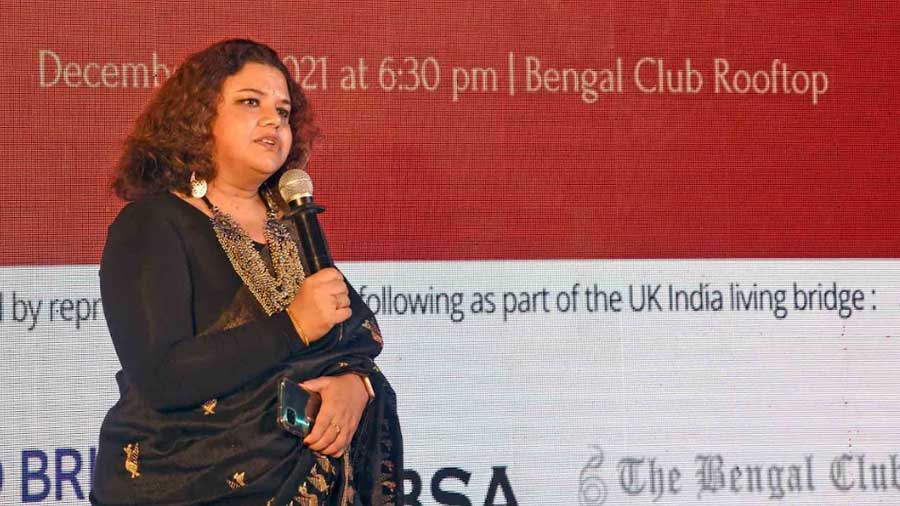
Bidisha Datta, a BHF trustee, was the emcee for the evening at The Bengal Club and delivered the vote of thanks Amit Datta
Projects like the conservation of temples, which involve the Foundation working on the ground in Bengal, have been possible due to the unstinting efforts of Kalyan Kar, the BHF’s go-to-person in Bengal. “I’ve been fortunate enough to work with the BHF, which is different in how it prioritises Bengali culture. A lot of organisations rely on business and commerce to build relationships between countries, but the BHF’s focus on culture means that Bengali heritage gets an opportunity to be represented before the world,” said Kar.
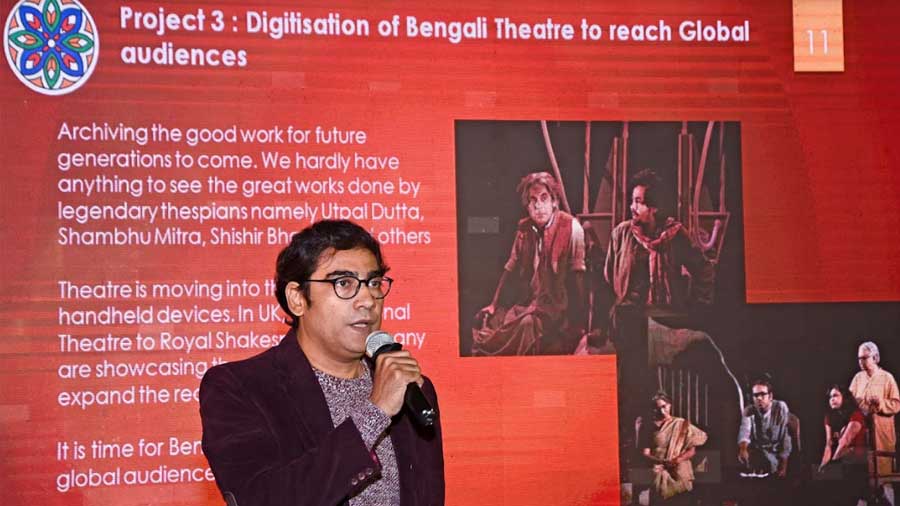
Koushik Sen pointed how ‘theatre still has the guts to speak the truth’ in Bengal Amit Datta
As part of preserving Bengal’s art and culture, the BHF has been working closely with a number of thespians in Kolkata to help digitise Bengali theatre for overseas audiences besides looking after the needs of theatre technicians and staff whose lives have been affected by the Covid-19 pandemic. Describing this association between theatre and BHF in detail was director-actor Koushik Sen: “The last two years have dealt a devastating blow to theatre. But with the help of the BHF, we were able to raise enough funds to support 250 theatre technicians for two years. There is no shortage of talent when it comes to theatre, but we need a creative economy that can support theatricians. Theatre has always had the guts to say what is true and the kind of work that the BHF does helps theatre survive in Kolkata.”

Debanjan Chakraborty was effusive in his praise for BHF and the partnership it shares with The British Council Kolkata Amit Datta
A significant achievement for anybody associated with Bengali heritage came in the middle of December when UNESCO inscribed Kolkata’s Durga Puja on the “Representative List of the Intangible Cultural Heritage of Humanity”. The British Council in Kolkata had been instrumental in making this possible, something Debanjan Chakraborty, its director, explained: “The process behind obtaining the inscription was extremely complex. But we’re proud to have prepared the Durga Puja Cultural Economy Report that facilitated it. Kolkata and Bengal have always been the beating heart of cosmopolitanism, and the British Council’s partnership with BHF symbolises all that is real, living and exciting about Bengali heritage.”
Positive signs
Rajive Kaul, representing the Indo British Scholars’ Association (IBSA), underlined the cultural exchange between India and the UK by citing the 62,000 Indian students who travelled to study in British universities over the past year. “At IBSA, we aim for further integration with the BHF alongside working closely with Indian alumni all over the world. The last few years have also seen several British nationals come to India for higher education and work. That is a very positive sign,” noted Kaul.
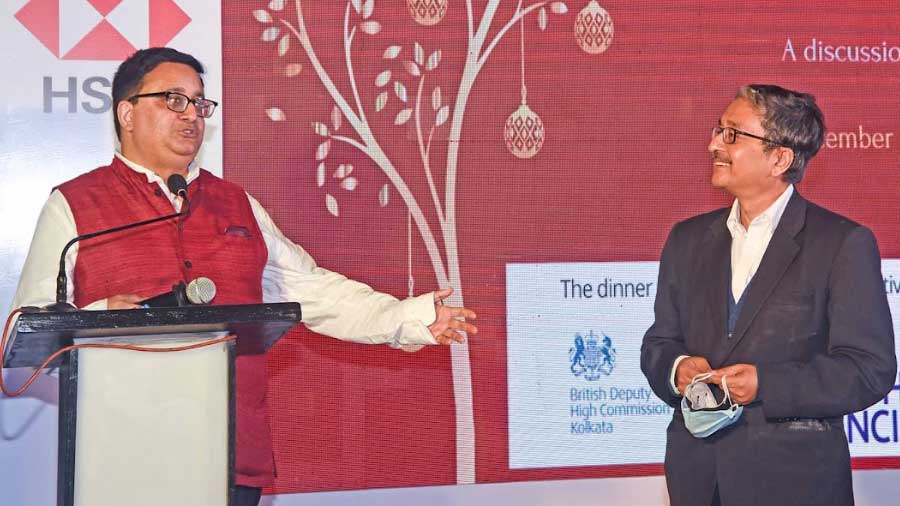
Niyogi shares a light moment with his one-time mentor and present Bengal Club president, Ambarish Dasgupta Amit Datta
Wrapping up the event at The Bengal Club was Ambarish Dasgupta, the president of the 194-year-old institution. Reflecting on the accomplishments of the BHF, Dasgupta said that “what BHF has done should be featured by the World Economic Forum (WEF) in Davos as a case study of cultural economy”.
Moving to the field
After an evening of presentations and catching up at The Bengal Club, the male members of the BHF swapped their suits for all-whites as the second edition of the HSBC Indo-British Heritage Cup took place at the Eden Gardens on December 28.
The 20-over cricket match saw UK in India, comprising the British Council and the British Deputy High Commission in Kolkata, bat first against the defending champions, India in UK, which was composed of members from the BHF and the IBSA.
UK in India posted what looked like a competitive total of 157 runs for the loss of six wickets on an Eden pitch that offered a bit of lateral movement for the seamers. Solid contributions from Yatizh Somaiya (a run-a-ball 23) and Ravi Singh (a fiery 22 runs off 15 deliveries) gave the visitors a chance to redeem themselves after 2019, when they were comprehensively outplayed in the inaugural match of the competition. Ankit Aditya, later named as Man of the Match, led the way for India in UK with three scalps in his four overs while Yesh Goyel chipped in with two wickets.
Easy chase
In pursuit of 158, India in UK got off to a steady start from which they never looked back. The UK in India bowlers were in a generous mood, serving up a total of 92 extras that left little for their opposition batters to worry about. Without losing a wicket, India in UK comfortably chased down the target inside 15 overs, with openers Sanjib Dutta and Jude Mukherjee contributing 21 and 22, respectively, before retiring hurt.

Avishek Dalmiya presents the HSBC Indo-British Heritage Cup to the India in UK team, who managed to retain their title from 2019 Ritagnik Bhattacharya
The latter, who played a crucial role in organising the match, reflected on how “we want to use occasions like this to give back to the community, especially young cricketers who form a part of the next generation. In 2019, we had organised this match at the Mohun Bagan ground and we are delighted to play this time at the Eden, for there can be no better venue for an India-UK contest.”
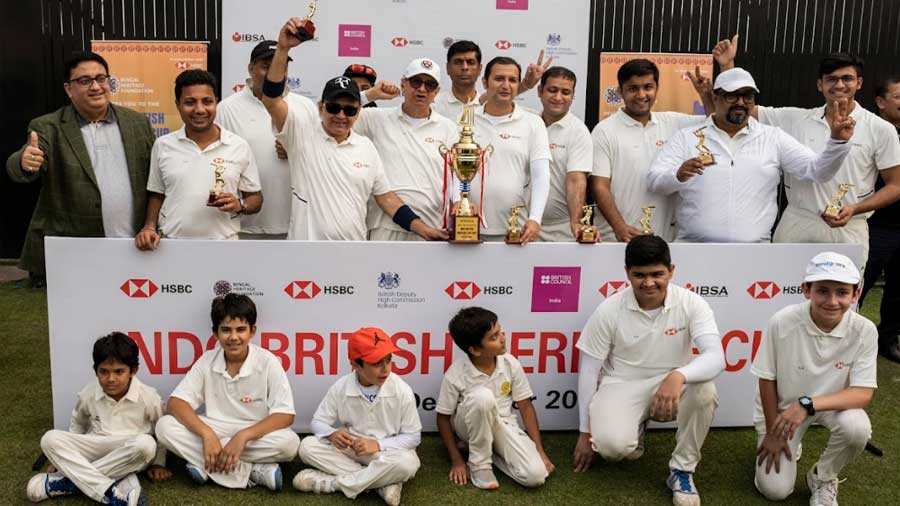
India in UK team members pose with their hard-earned trophy Ritagnik Bhattacharya
At the presentation ceremony, Avishek Dalmiya, the current as well as the youngest President of the Cricket Association of Bengal (CAB), announced an “initiative to groom boys and girls under 16 years of age who aspire to become cricketers with their education and communication skills. We seek the active collaboration of the British Council and the BHF to realise this, to help young players mature into responsible and aware citizens.”
To mark the occasion, a memento embodying the “living bridge” between India and the UK, designed by Samrat Som, was handed over to Dalmiya by Lowe. “This trophy captures the excellence that comes about when Britishers and Indians get together. The idea for this memento was conceived in Britain and it was 3D printed right here in Kolkata,” said Niyogi, capping off an engaging two days that captured the spirit of the special Indo-British relationship.
